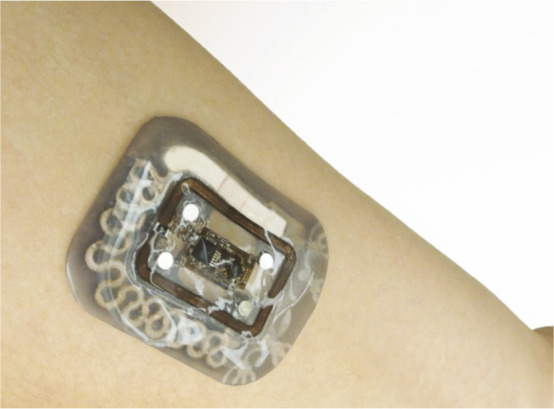Ancient DNA and range of bovids and rhinoceroses

Reconstructed scene of hunting gaurs in northeast Tibetan Plateau approximately 5,200 years ago.
Prehistoric bovid remains are common in the northeastern Tibetan Plateau (NETP). However, the lineage and range of NETP bovid species are unknown. Ningbo Chen, Lele Ren, Linyao Du, Jiawen Hou, et al. (pp. 28150–28159) analyzed DNA of approximately 5,200-year-old bovid and rhinoceros specimens from the Neolithic NETP site of Shannashuzha (SNSZ). Comparisons of ancient bovid DNA with the DNA of modern Bovini species found that SNSZ bovid were genetically similar to modern Asian wild gaur and diverged from extant gaur and gayal lineages approximately 18,000 years ago. Comparisons of ancient and extant rhinoceroses revealed that SNSZ rhinoceroses were a sister clade of Sumatran rhinoceroses. The range of extant tropical gaurs and Sumatran-like rhinoceroses extended up to 34.06°N approximately 5,200 years ago. Population reconstructions revealed declining SNSZ gaur populations approximately 5,000 years ago, consistent with paleoclimatic records of the NETP transitioning to a cold climate around that time. However, rhinoceroses roamed throughout the NETP between 8,000 to 6,000 years ago, revealing a warm and moist environment at the time. Radiocarbon dating of NETP archaeological sites found an increase in human settlements with domestic animal pastures between 6,000 and 3,000 years ago. The findings suggest that climatic change and human activities contributed to the disappearance of gaur and Sumatran-like rhinoceroses from middle and high latitudes, leading to the animals’ distribution in tropical regions, according to the authors. — M.S.
Sensorimotor brain regions and action-specific activity
Reaching toward and grasping objects engages partially separable neural circuits in the human brain’s frontal cortex and parietal cortex. However, it is unclear whether activity in these brain networks is driven by reaching or grasping behavior, regardless of the body part used to perform the action. Yuqi Liu et al. (pp. 28433–28441) used functional MRI to compare brain activity in seven typically developed individuals and four individuals born with severely shortened or completely absent upper limbs due to dysplasia, a condition marked by abnormal growth or development of cells within tissues or organs. While being scanned, participants reached toward and touched a foam bar with their fingers or toes, or reached toward and grasped the foam bar using their hand or foot. Action-specific regions in a wide network of frontoparietal association sensorimotor cortices involved in planning and controlling movements were activated in both typically developed individuals and individuals with dysplasia. Further, this brain network showed different activity for reaching versus grasping, regardless of the body part used. According to the authors, the findings suggest that the functions of many regions in the human brain emerge based on innate constraints, regardless of motor or sensory experience in early development. — J.W.
Nonvaccinator clusters may increase measles outbreak potential
The United States witnessed substantial measles outbreaks in 2019, despite having surpassed the 95% national vaccination coverage recommended by the World Health Organization. Nina Masters et al. (pp. 28506–28514) used computational experiments to explore how measles outbreak occurrence or forecasting at various vaccination levels may be affected by local spatial clustering of nonvaccinated individuals and aggregation of reported vaccination data over large spatial scales. In the presence of clustering, large outbreaks were possible even at 99% overall vaccination coverage, and there was an 89% chance of an outbreak involving five or more people at 95% overall vaccination coverage. Moreover, aggregating vaccination data at the state-level or county-level could result in underestimation of the predicted risk and size of outbreaks, especially as clustering increases and regardless of the overall vaccination rate. The findings suggest that fine-scale vaccination data should be publicly released and used to create community-level susceptibility maps. Such maps could help effectively plan and implement targeted interventions in high-risk areas to prevent measles outbreaks and a return to endemic transmission, according to the authors. — J.W.
Nutrient contributions of small tributaries

Sampling near a small, unnamed tributary of Lake Michigan.
In rivers, lakes, and marine coastlines worldwide, excessive inputs of nutrients such as nitrogen and phosphorus cause eutrophication, a condition favorable to the growth of harmful algal blooms that reduces water quality and alters ecosystem functions. Monitoring and regulation of eutrophication commonly focuses on the largest tributaries. Over 6 days, Robert Mooney et al. (pp. 28175–28182) surveyed 235 tributaries of Lake Michigan, the world’s fifth-largest freshwater lake, for nutrient loads and the concentration of nutrients in each tributary. The six largest tributaries accounted for around 70% of the daily nitrogen and phosphorus, but small and abundant tributaries also played a significant role. The authors report that nutrient loads in small tributaries were high for their size, with a bias toward dissolved inorganic forms of nutrients. Further, because plumes of nutrients released by small tributaries become trapped and overlap with each other in coastal areas, they likely have outsize impacts and fuel algal blooms. According to the authors, the results suggest that small tributaries may be an underappreciated source of nutrients to bodies of water and could be a target for eutrophication mitigation efforts. — P.G.
Soft epidermal devices for sweat biomarker measurements

Skeletal microfluidic device mounted on a forearm.
Soft, wearable devices capable of monitoring multiple biomarkers in sweat can help track human nutrition, health, and wellness. Sungbong Kim, Boram Lee, Jonathan Reeder, Seon Hee Seo, et al. (pp. 27906–27915) describe a device that uses multiple methods to quantitatively measure biomarkers related to physical and mental stress. The device uses a “skeletal” design, in which sturdy microfluidic structures are embedded within a flexible matrix. Cortisol, an adrenal hormone secreted in response to stress, is measured using a lateral flow immunoassay, the sensitivity of which was comparable to a reliable benchtop assay. Cortisol secretion leads to elevated glucose levels, whereas vitamin C can reduce cortisol levels; the device measures glucose and vitamin C levels via a fluorescence-based assay. Electrodes in the device measure sweat rate and skin electrical resistance, both of which also change in response to stress. The device can be controlled, and measurements read out, via a smartphone. In field studies, four healthy volunteers exhibited circadian rhythms in cortisol levels under control conditions, which became disrupted following a period of intensive work and returned to normal after regular sleep patterns were resumed. According to the authors, the device could be used for noninvasive, real-time monitoring of stress levels. — B.D.


